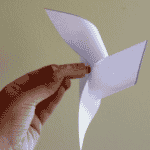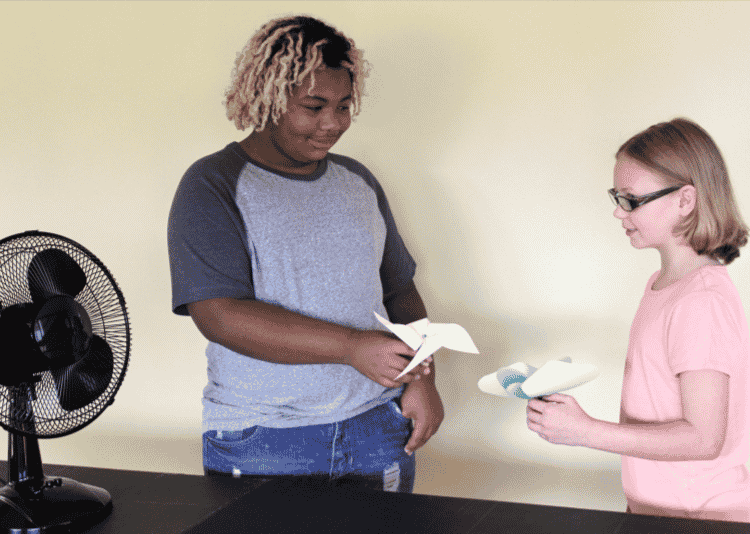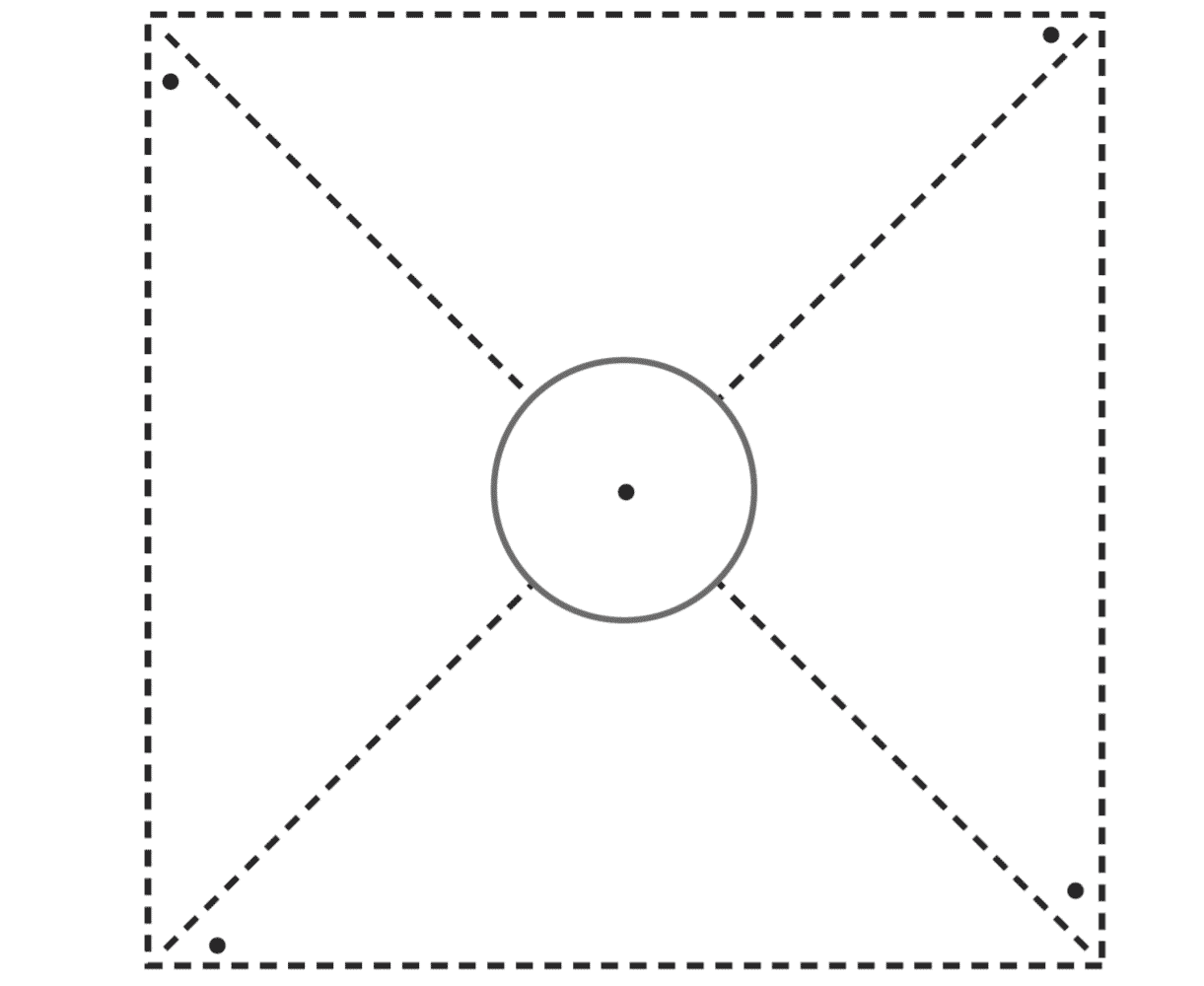Overview
STEM careers
Time
Materials
For Building:
|
For Testing:
|
Instructions
DEFINE THE PROBLEM
- It’s easy to spin a conventional pinwheel if you blow on it hard. But what about a more sensitive pinwheel? Organize students into pairs and introduce the challenge: make the pinwheel that spins in the slightest breeze possible, demonstrated by spinning the furthest away from the wind source.
- Pinwheels vary a great deal in their sensitivity to wind. Ask students to list the variables that affect this sensitivity. As needed, note that the shape, length, thickness, and number of blades all affect how much wind pinwheels need to spin.
- First, students build a baseline pinwheel:
- Cut the template out along the bold lines.
- Cut into the shape along the lighter lines, stopping at the center.
- Hold the straight pin in one hand and bring every other point to the center. Push the pin through the paper and poke it through the center of the pinwheel.
- Slide a bead onto the pin. Stick the pin through the eraser of the pencil (or the end of a cork).

- Choose and test one baseline pinwheel by blowing on it with the hair dryer or putting it in front of the fan. Use the measuring tape to determine how far away the pinwheel can get and keep spinning. Mark the spot with masking tape and a sticky note. The students’ challenge is to make a new pinwheel—that spins constantly—as far from the wind source as possible.
- Tell students to decide which variables they want to change in their pinwheels to make them more sensitive. They can make an entirely new pinwheel or they can alter the one they just built. Remind them of the other materials available as they redesign their pinwheels. Instruct students to take notes on the changes they made and what their reasoning was.
- Test each new pinwheel, marking how far from the wind source it can still spin.
- Once a winner emerges, discuss its features as a class. What makes this pinwheel the most sensitive of all? How might it be made even more sensitive? As time allows, test some more ideas.
BRAINSTORM AND DESIGN
TEST AND REDESIGN
SHARE

Printables

Guiding questions
-
What blade material might be even more sensitive to wind than paper?
-
What are some alternative ways of connecting the blades to the stem? How might they affect the sensitivity of the pinwheel?
-
In nature, how are different blade shapes and materials used to take advantage of wind?
This activity was adapted with permission from Underwriters Laboratories. All rights reserved.


0 Comments